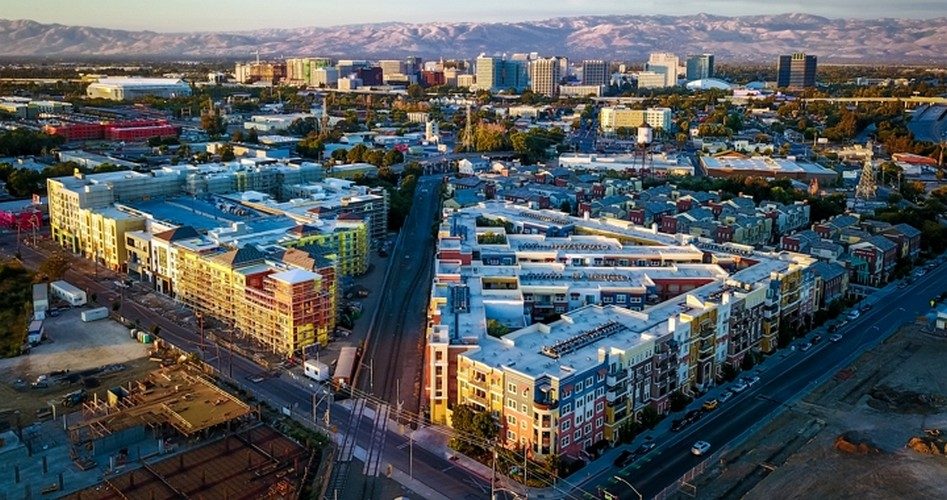
An article appearing in the liberal U.K. Guardian told half the story: Increases in rents in apartments close to the Facebook facilities in Silicon Valley are driving the renters out. Sandra Zamora, a 29-year-old preschool teacher and restaurant worker, told her half of that story to Guardian reporter Sam Levin: “Facebook is taking everything we have … and giving us what? Nothing. Just pain in our lives. Facebook is just ruining the community.”
Zamora and others living in the Menlo Park apartment complex (about a mile from Facebook’s headquarters) just received notices from the complex’s new owners that their rents would soon rise from $1,100 a month to $1,900 a month, and they would have 90 days either to sign a new lease, or move out.
Levin milked the story:
Eisabel Coronel, 48, said that as soon as she explained the situation to her daughter, the 10-year-old became distressed about leaving: “She says, ‘My school is here. My teachers are here. My friends are here’ … It’s very sad and scary.”
Ricardo Colin, Coronel’s 24-year-old son who also lives in the apartment, said he keeps searching for cheaper alternatives, but can’t find anything. The computer engineering student already does part-time janitorial work to help pay rent and said he might have to drop his studies and get a full-time job.
Or they may have to leave the region, a pattern Colin has observed for years: “I’ve lost many friends because of the rents and because of Facebook.”
Seven families have already moved out of the complex, and more are certain to follow.
Asking the right question is a good start to finding the right answer. Why are rents increasing so much? Part of the answer is the proximity of the property to the Facebook complex. And another part of the answer is there is precious little incentive for builders to add more housing there. It’s an economic law that cannot be violated for very long: If demand outstrips supply, rents will rise.
The Sacramento Bee asked its readers from across the political spectrum how to solve the problem. Many had a simple and economically sound answer: Build more housing. For example, Mike Madrid, principal of Grassroots Lab, said, “All policy proposals to address this problem are insufficient without one critical element: a dramatic increase in supply at all levels.”
Erwin Chemerinsky, dean and professor of Law at University of California, Berkeley School of Law, was even more concise: “Build a lot more of it.” Joe Fleischman, publisher of the FlashReport, gave a lesson in Economics 101:
We reduce the cost of housing by increasing the supply. This is done by reducing the taxes and regulations that increase the cost of building housing, and by reducing state and local regulations that inhibit the construction of new housing [along with] throwing out zoning restrictions.
Allan Zaremberg, president and CEO of the California Chamber of Commerce, was succinct: “Simply put, we need to build more housing.” And Kim Yamasaki, executive director of Center for Asians United for Self Empowerment, provided the echo: “The short answer is to build more housing.”
Some of the responses to the Sacramento Bee’s query bordered on abysmal ignorance of how to solve Zamora’s problem. Take, for example, the response of Angie Wei, chief of staff of California Labor Federation: “Allow local governments to adopt rent control policies. Incentivize home ownership, not investors. Increase housing production. Create good jobs near housing.”
Daniel Zingele, senior vice president of The California Endowment, shared his economic ignorance with this: “[We should] recognize housing should be more than just a commodity. It is a basic human right.”
It is always helpful to ask, in response to such a claim, at whose expense?
Linda Ackerman, president of Marian Bergeson Excellence in Public Service Series, took the time to explore the real reasons behind the shortage of middle-class housing in Silicon Valley, and everywhere else that politicians seek to override or ignore basic economic law:
The high cost of housing is driving residents out of our state; is this an unintended consequence of the draconian regulations that face the housing industry here?
In 1970 you could purchase a lovely three bedroom home on a 10,000 sq. ft. lot for $26,000; the average cost today is $500,000. The price of a typical single family home in California is more than twice that of the same typical home across the U.S.
The average home developer in California pays a $22,000 permit development fee to build a home and that does not include water fees, vs. the average $6,000 across the nation.
The additional regulatory fees they pay can bring this total from $50,000 to $85,000. We will be adding to that total $4,500 per unit in the near future due to a legislative mandate that will require solar panels to be installed on all new homes built by the developer.
CEQA [the California Environmental Quality Act], which breeds oppressive protracted environmental lawsuits as well as equally oppressive land-use lawsuits filed against developers, delays new home development for years and often results in fewer homes being built.
The solution is simple but not easy, given the predilection or ignorance of politicians who keep the free market from solving this problem. As Ackerman noted, “It will take the strength and the will of our Legislature to take a look at a backlog of hundreds of thousands of needed housing units to make tough decisions about the consequences of over regulation.”
Until then, rents will continue to rise, and people such as Zamora, wept over by Levin, will be forced to find another place to live where the rents are cheaper and the politicians less zealous in their attempts to override economic law.
Image: SpVVK via iStock / Getty Images Plus
An Ivy League graduate and former investment advisor, Bob is a regular contributor to The New American magazine and blogs frequently at LightFromTheRight.com, primarily on economics and politics. He can be reached at [email protected].



